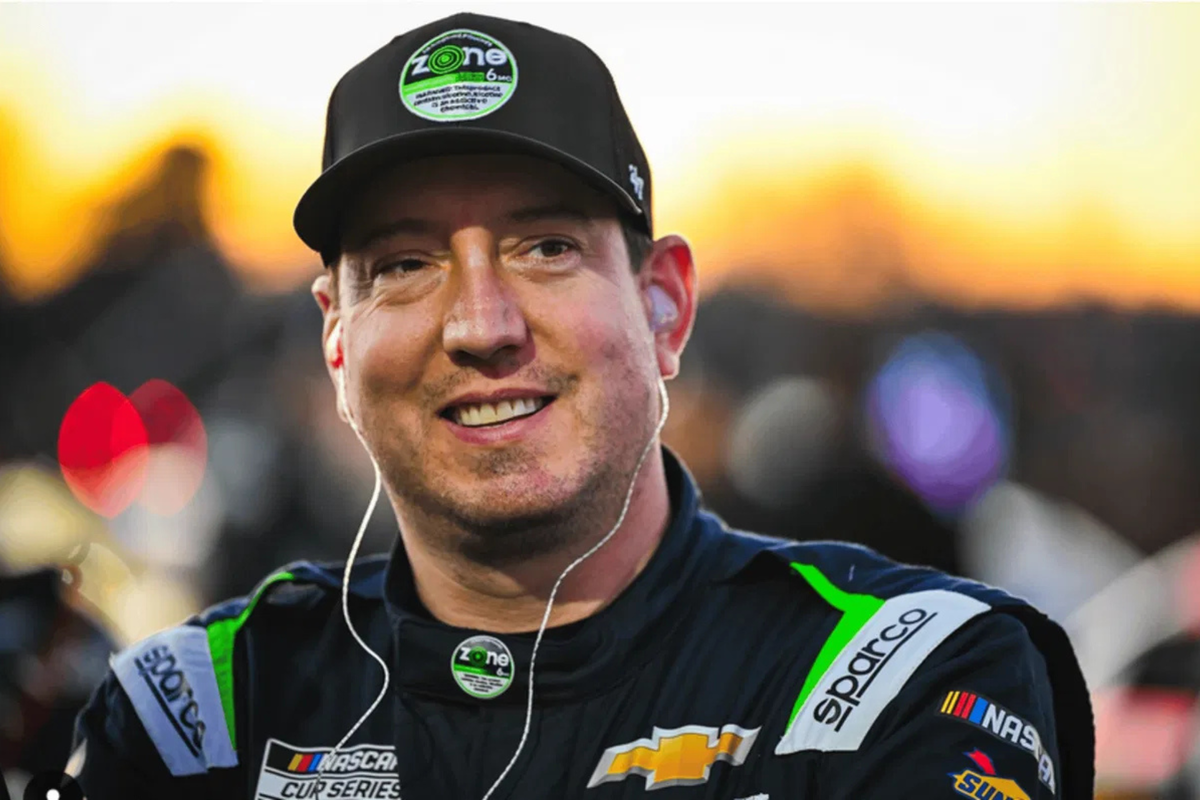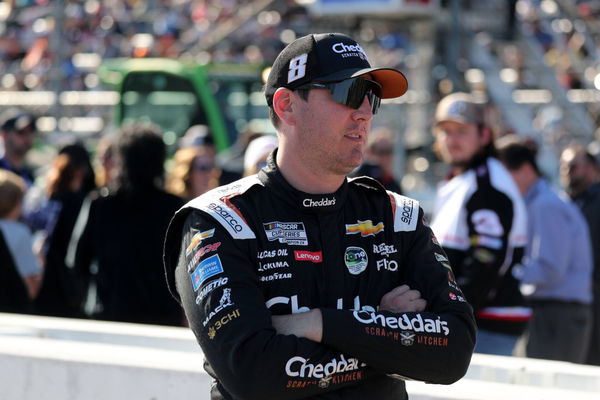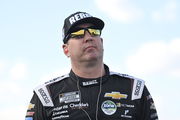
Imago
@rowdybusch / Instagram

Imago
@rowdybusch / Instagram
Kyle Busch’s NASCAR legacy is no joke. 232 wins across all national series, 2 Cup Series Championships (2015 and 2019), and the only driver to ever sweep all three events in one weekend. So, isn’t it puzzling to imagine the same driver on a 2-year winless streak less than half a decade after winning a championship? Well, there’s a simple answer: the Next-Gen car.
Watch What’s Trending Now!
Kyle Busch is among many veterans who struggled to adapt to the Next-Gen car introduced in 2022. The car was introduced to bring parity to the sport, but in doing so, it has stripped NASCAR of its engineering roots. In a recent conversation on the Pat McAfee show, Busch delves into what makes it so difficult for drivers to adapt and show their skill in the Next-Gen era.
ADVERTISEMENT
Rowdy throws light on the new framework and engineering tactics
When the Next-Gen car was introduced in 2022, it garnered significant hype, and for good reason. 19 different winners emerged in the first season, 5 being first-time winners! Then, Trackhouse Racing’s Ross Chastain managed to finish 2nd in the Championship standings in just his first season with the team. However, veterans like Martin Truex Jr. and Kyle Busch struggled massively, and it’s not hard to see why.
Kyle Busch highlighted a fundamental transformation in NASCAR’s technical landscape over the past few years, which has had a direct impact on the role of driver skill. Busch explained on the Pat McAfee show, “The last three years have become more sourced from a single source supplier,” meaning teams no longer build their chassis or bodies as they used to; instead, “everybody buys their chassis from the same place. The bodies all come from the same place. The parts and pieces all come from the same place.”
This move toward uniformity was designed to reduce costs, improve parity, and place greater emphasis on driver ability rather than mechanical advantages. However, this shift also means that traditional competitive edges derived from unique engineering and manufacturing are nearly eliminated. Where once teams prided themselves on custom-built components, now “all of that’s the same,” says Busch. This levels the playing field mechanically but introduces a new kind of competition: “How you assemble those Legos and manipulate those Legos… you gotta be better than all the other teams.”
ADVERTISEMENT

Imago
MARTINSVILLE, VA – NOVEMBER 03: Kyle Busch 8 Richard Childress Racing Cheddar s Scratch Kitchen Chevrolet talks with members of his crew prior to the running of the NASCAR, Motorsport, USA Cup Series Playoff Race Xfinity 500 on November 03, 2024 at Martinsville Speedway in Martinsville, VA. Photo by Jeff Robinson/Icon Sportswire AUTO: NOV 03 NASCAR Cup Series XFINITY 500 EDITORIAL USE ONLY Icon2411037269500
Kyle Busch suggests that this equalization shifts the competitive advantage toward teams with superior engineering insight and strategic nuance: “Having the smart people… being able to kinda go manipulate the little bits of gray area… is way bigger nowadays than maybe what it once was.” This, in turn, strips drivers of their innate talent and puts more importance on the setup of the racecar. Even a skilled driver like Kyle Busch has struggled to adapt to the Next-Gen car, posting just 4 wins in 129 starts in the Next-Gen era.
ADVERTISEMENT
Although raw driving talent remains essential, Busch’s view clarifies that modern NASCAR success hinges more on sophisticated teamwork, precise data interpretation, and strategic adjustments. And as mentioned before, Kyle Busch was not alone in experiencing a learning curve with these Next-Gen cars.
Top Stories
‘NASCAR on Sale’: Team Owners Interested to Buy Out France Family With $5B Price Tag

Kyle Busch Hits Rock Bottom as Snowball Derby Nightmare Sparks Wave of Fan Sympathy

NASCAR Driver Left Helpless for 2026 as Chevy Drops the Axe on Daytona Winning Star

Kyle Larson Reveals Rick Hendrick’s Pet Peeve While Roasting His On-Track Blunders

Snowball Derby Rocked by Conspiracy Theories as NASCAR Driver Forced to Abandon Race

Drivers have been vocal for years
The changing landscape of NASCAR has prompted strong reactions from drivers across the field, highlighting a widespread recognition that competitiveness and on-track behavior have drastically evolved in recent years. Hendrick Motorsports driver Alex Bowman also reflected on the rise in aggressive racing since the introduction of the Next Gen car.
ADVERTISEMENT
Amid the 2024 Cup Series playoffs, Alex Bowman spoke about how the Next-Gen car has changed the way people race. “Yeah, it’s gotten crazy over the last couple of years, for sure. It’s changed a lot. It’s changed for everybody, and I feel like I’m not the overly aggressive, dirty race car driver, and the races have played out to really benefit the overly aggressive, dirty race car driver,” Bowman said.
The aggression stems from the fact that the robust body of the car allows for more beating and banging. The most apt evidence for this is Ross Chastain‘s 2022 playoff race at Martinsville, where he rode the wall on Turns 3 and 4 in fifth gear and still managed to keep his car in shape and crossed the line ahead of rival Denny Hamlin to qualify for the Championship 4!
Well, you must think that since Alex Bowman is not a champion of the sport, his take is probably coming from a side that is not benefiting from this change. However, Joey Logano, the guy who has two titles in the Next-Gen era, also opened up about how much has changed. During last year’s playoffs, just before going on to lift his third championship, Joey Logano said, “Oh, it’s 180. I mean, it’s completely different… Now, like everybody kind of doing each other here and there, it’s not a thing. You used to not be able to hit the wall at Darlington and not get the right rear tire flat. Now the cars are just tougher, and it promotes more and more aggressive racing, which I think is good.”
ADVERTISEMENT
The aggressive driving has led to multiple life-threatening wrecks, such as Ryan Preece at Daytona in 2023 and 2025. And while it has come under a lot of scrutiny over the years, none have been more blatant about it than Denny Hamlin and Kyle Busch. The only difference is Hamlin has consistently won races in this era, while Busch has struggled. So, what do you think? Are Next-Gen cars an issue, or is Kyle Busch missing something at Richard Childress Racing that is holding him back? Let us know in the comments!
ADVERTISEMENT
ADVERTISEMENT
ADVERTISEMENT

